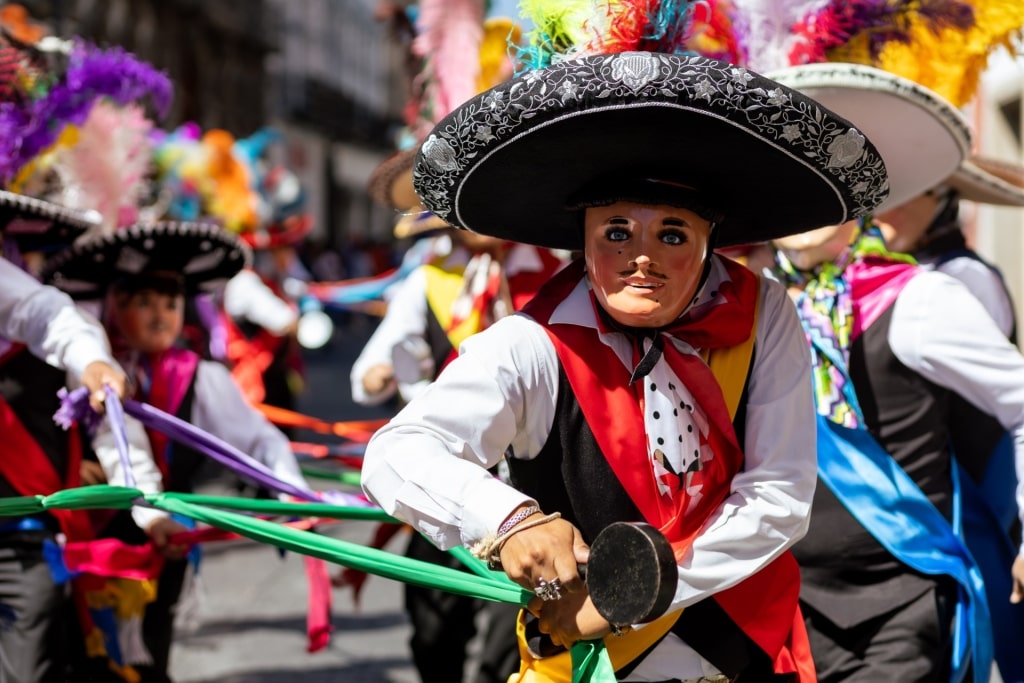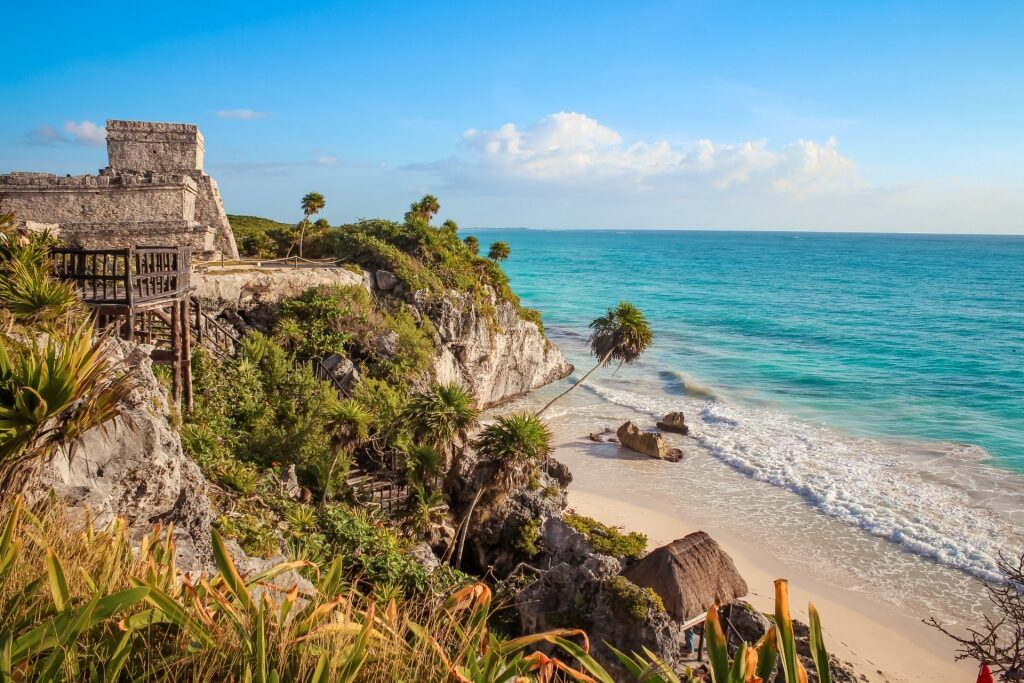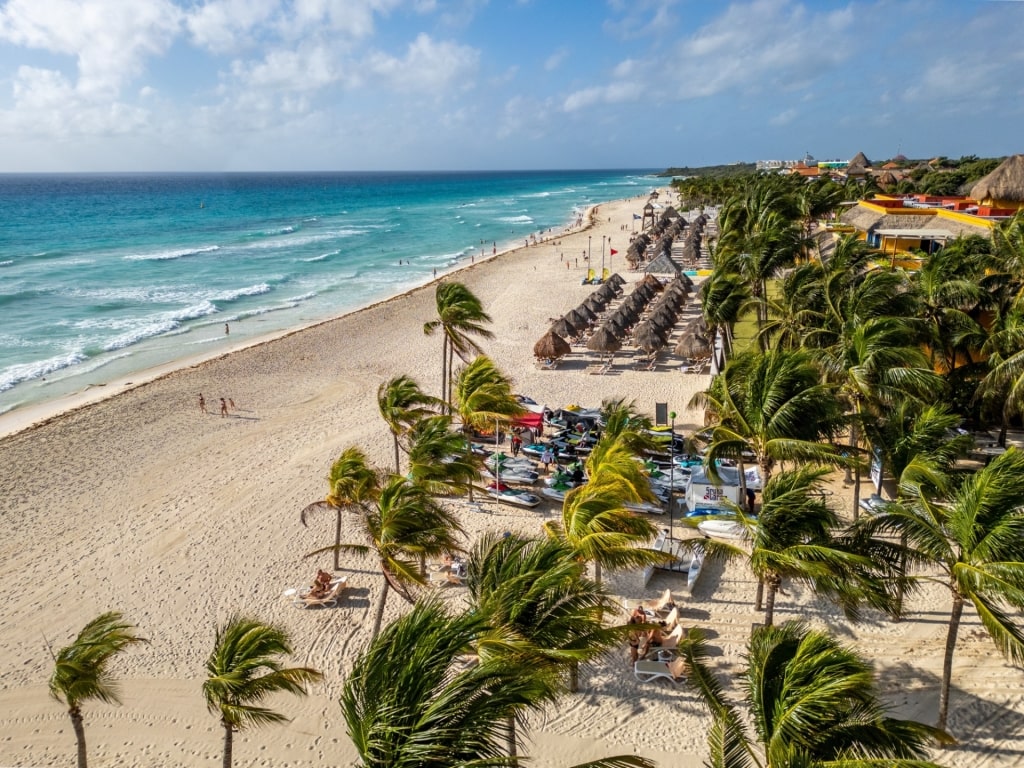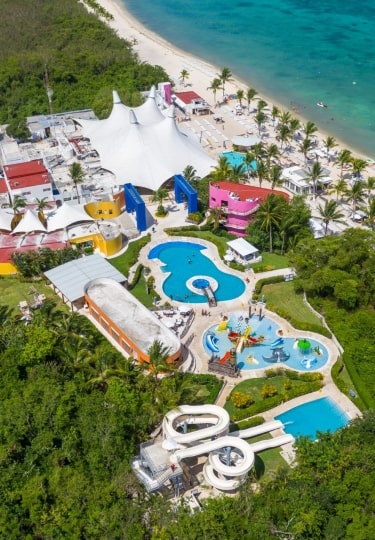The best time to visit Riviera Maya is between January and April, a time of lower humidity, long, sunny days, and delightfully warm temperatures.
This expanse of Caribbean coastline enjoys a typically tropical climate. Essentially, there are just two main seasons; the cooler, less humid period between January and April, and the hotter, wetter months of May to December, when tropical storms can pass through.
Visiting Riviera Maya by Season
Summer

Snorkeling
In summer, from June to August, the weather is hot and humid and the beaches are quieter. July is the hottest month of the year, with daily averages of 83.3°F (28.5°C).
This is technically storm season in the Caribbean, although storms don’t tend to peak until a little later in summer. As such, June is still a good time to visit if you don’t mind the increased humidity. The sea is the perfect temperature for diving and snorkeling in Mexico.
Fall
Fall is peak storm season, with September and October the wettest months; in September, there’s an average of 8.9 inches (225mm) of rain. By November, though, the weather is changing as the humidity starts to drop. By now, there’s just 3.5 inches (85mm) of rainfall and clearer skies. This is one of the best times to visit if you want more space to yourself.
Early November is also the Day of the Dead celebration, a fascinating time to be in Mexico, when the deceased are honored.
Winter
December, January, and February are peak season months on Riviera Maya, with an influx of visitors around Christmas and New Year’s. The weather is warm but stable, the humidity less intense, and the nights pleasantly balmy.
Expect average daily temperatures in January of 74.2°F (23.4°C). The average daily high in January, meanwhile, is 82°F (27.6°C), so it’s easily warm enough to enjoy the beaches of Riviera Maya.
The skies may be cloudy in December and January and the Norte wind takes the edge off the heat, making this a great time for active sightseeing and exploring incredible archaeological sites such as Kohunlich and Chacchoben.

Carnival celebration in Mexico
If you want to be part of the Carnival celebrations, time your visit accordingly. This colorful festival takes place before the beginning of Lent, which falls 40 days before Easter.
Spring
March and April are the best months to go to Riviera Maya. The days are hot and sunny and rainfall and humidity are low; in March, the driest month, there’s just 1.4 inches (35mm) of rainfall, with daytime temperatures averaging 76.5°F (24.7°C).
By May, humidity is increasing and average daily temperatures rise to 81.9°F (27.7°C), with the possibility of thunderstorms. As such, May is regarded as a shoulder season month in Riviera Maya and should be less busy than the peak winter months. You can expect an average of 4.3 inches (110mm) of rain and seven rainy days at this time.
When Is Rainy Season?
August to October is the rainy season on the Riviera Maya, with rainfall increasing to a peak in September, the wettest month by some distance, when there are on average 14 rainy days and rainfall of 8.9 inches (225 mm).
It’s still possible to travel at this time, and it is unusual to have long spells of continuous bad weather unless a hurricane is passing through. Bear in mind that peak hurricane season in this part of the Caribbean is from August to October, when the sea temperatures are at their highest.
Read: Cruising During Hurricane Season: Everything You Need To Know
When Is High Season?

Tulum
High season on the Riviera Maya is from Christmas to April, when the humidity is lower. March is the driest month of the year, although it can be busy, especially around Spring Break.
During this high season period, the beaches are busy and the beach clubs pump out music all day long. There are big parties for the Dia de la Virgen de Guadalupe, the patron saint of Mexico, on December 12, and for New Year’s, when Mexicans head for the beach.
Carnival is a time of colorful floats and street parades, parties, and live music. Semana Santa, or Holy Week, which falls on the week before Easter, is a more somber occasion, but no less spectacular.
When Is Shoulder Season?
May, November, and early December (with the exception of the big festival on December 12) are regarded as the shoulder season months in Riviera Maya.
There will be fewer crowds and reasonably dry weather, and the water has excellent visibility for diving and snorkeling. In May, look out for nesting sea turtles and the first basking whale sharks of the season.
When Is Low Season?
Low season coincides with the more humid summer and fall months, from June to October, with September and October the quietest time due to the possibility of hurricanes.
June can see heavy rain, with 7.3 inches (185mm) falling on average over 12 days. The underwater world remains unchanged, of course, and the Mayan temples look particularly atmospheric when they are slick with rain. But June is not the best month for sitting on the beach.
July and August continue to be hot and humid, but locals still come to the coast for vacations. This is also the peak time for spotting enormous whale sharks and turtle hatchlings.
Read: Best Things to Do in Mexico

Playa del Carmen
Explore the Riviera Maya aboard one of our cruises to Cozumel. Browse itineraries on our website and book your Mexican getaway today.



